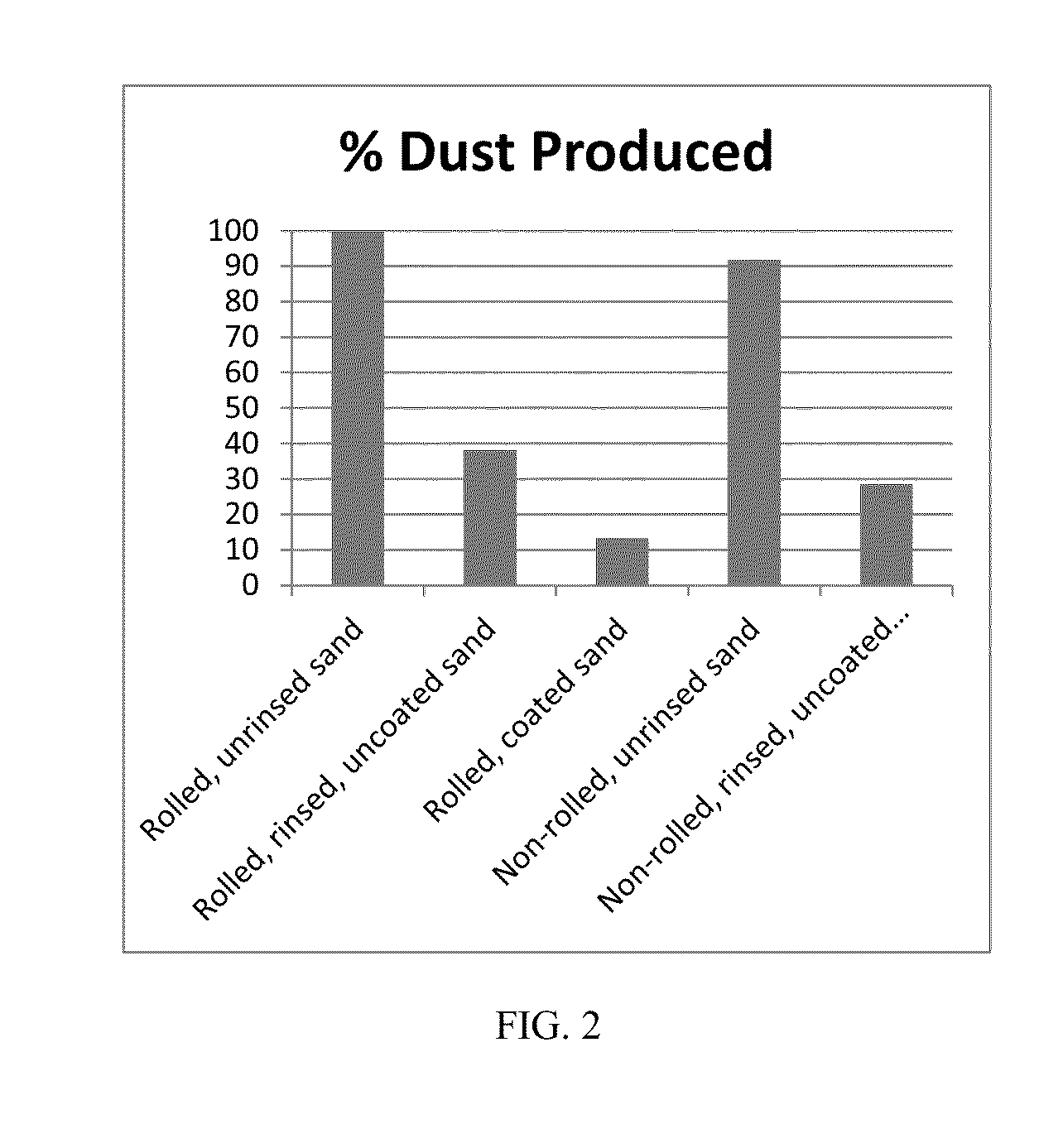Method of reducing dust with self-assembly composites
a self-assembly and composite technology, applied in the field of well treatment composites, can solve the problems of reducing the efficiency affecting the quality of oil and gas production equipment, and not having a method developed to date, so as to and reduce the amount of dust
- Summary
- Abstract
- Description
- Claims
- Application Information
AI Technical Summary
Benefits of technology
Problems solved by technology
Method used
Image
Examples
example 1
[0089]To form the coating, the sand was placed in an aqueous solution of 0.5% poly(allylamine hydrochloride) and 0.1% sodium chloride. The solution was decanted and the sand was rinsed. The sand was then placed in an aqueous solution of 0.08% poly(sodium styrene sulfonate). The solution was then decanted and the coated sand was rinsed.
example 2
[0090]To form the coating, the sand was placed in an aqueous solution of 0.5% poly(allylamine hydrochloride) and 0.1% sodium chloride. The solution was decanted and the sand was rinsed. The sand was then placed in an aqueous solution of 0.08% poly(sodium-4-styrene sulfonate) and 0.2% bentonite nanoclay. The solution was then decanted and the treated sand was then placed into an aqueous solution of 0.5% poly(allylamine hydrochloride) and 0.1% sodium chloride. The solution was then decanted and the coated sand was rinsed to form a polyelectrolyte bilayer (first polyelectrolyte bilayer) on the sand particulate. A second polyelectrolyte bilayer was further coated onto particulates coated with the first polyelectrolyte bilayer by placing such coated particulates in an aqueous solution of 0.08% poly(sodium-4-styrene sulfonate) and 0.2% bentonite nanoclay. The solution was then decanted and the treated sand was then placed into an aqueous solution of 0.5% poly(allylamine hydrochloride) and...
example 3
[0091]A self-assembling coating having alternating layers of positively-charged [poly(diallyldimethylammonium chloride)] and negatively-charged (sodium poly styrene sulfonate) on frac sand proppant was prepared from an aqueous-based system. Approximately 1 volume percent of each of the two water-soluble polymers were combined in distilled water. About 200 mL of the resulting aqueous solution was then mixed with 250 g of frac sand and shaken for two minutes. During this shaking the polymers self-assembled into positive and negative layers over the surface of the sand grains. When the aqueous solution was then drained from the sand the polymer coating remain adhered to individual grains. The water-polymer solution was shown to be reusable multiple times. As a control, 250 g of frac sand was also shaken with 200 mL of deionized water which did not contain any polymers but simply rinsed away dust particles. To mimic the rough handling responsible for producing dust during transport and ...
PUM
| Property | Measurement | Unit |
|---|---|---|
| apparent specific gravity | aaaaa | aaaaa |
| thickness | aaaaa | aaaaa |
| thickness | aaaaa | aaaaa |
Abstract
Description
Claims
Application Information
 Login to View More
Login to View More - R&D
- Intellectual Property
- Life Sciences
- Materials
- Tech Scout
- Unparalleled Data Quality
- Higher Quality Content
- 60% Fewer Hallucinations
Browse by: Latest US Patents, China's latest patents, Technical Efficacy Thesaurus, Application Domain, Technology Topic, Popular Technical Reports.
© 2025 PatSnap. All rights reserved.Legal|Privacy policy|Modern Slavery Act Transparency Statement|Sitemap|About US| Contact US: help@patsnap.com



